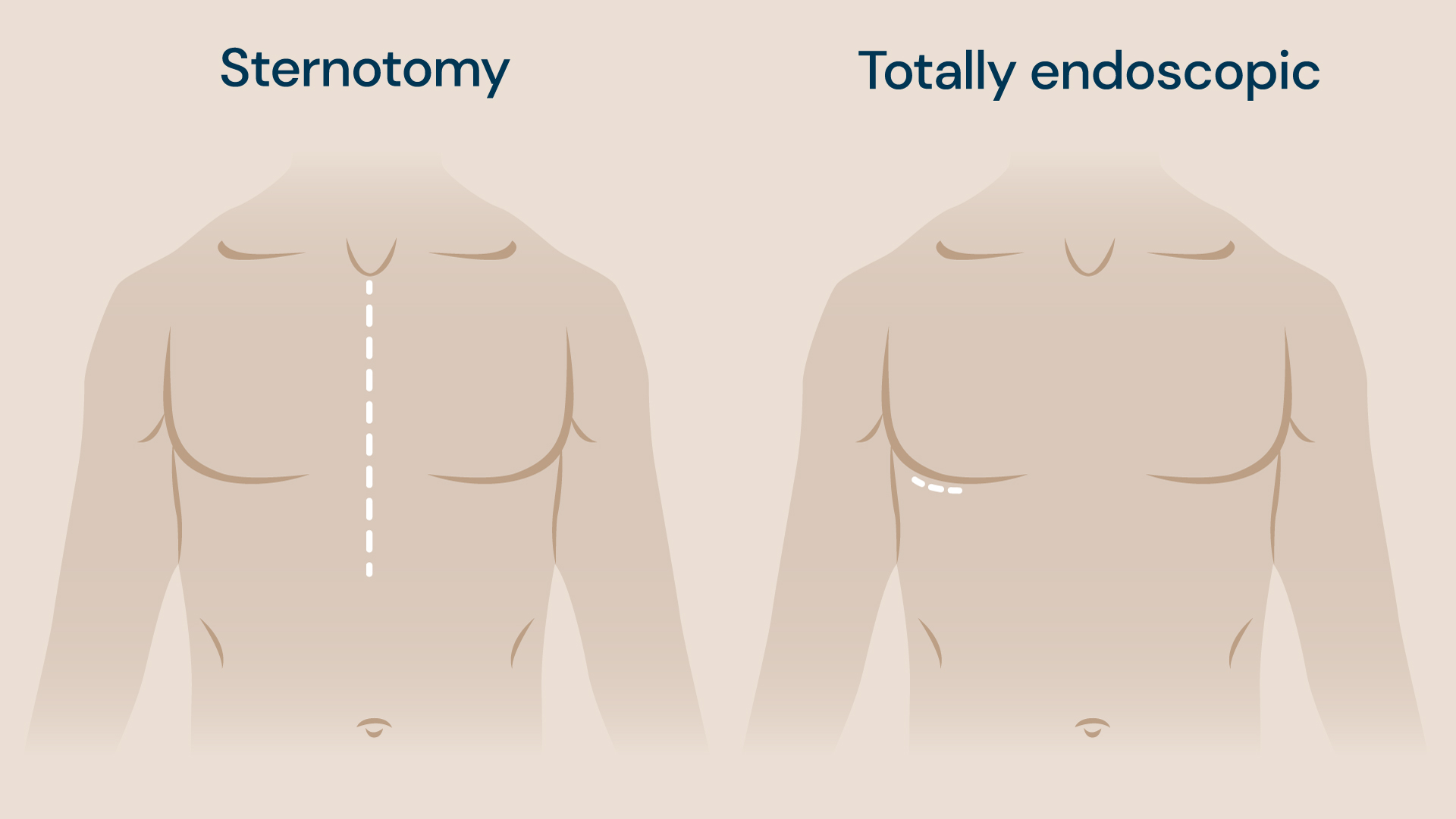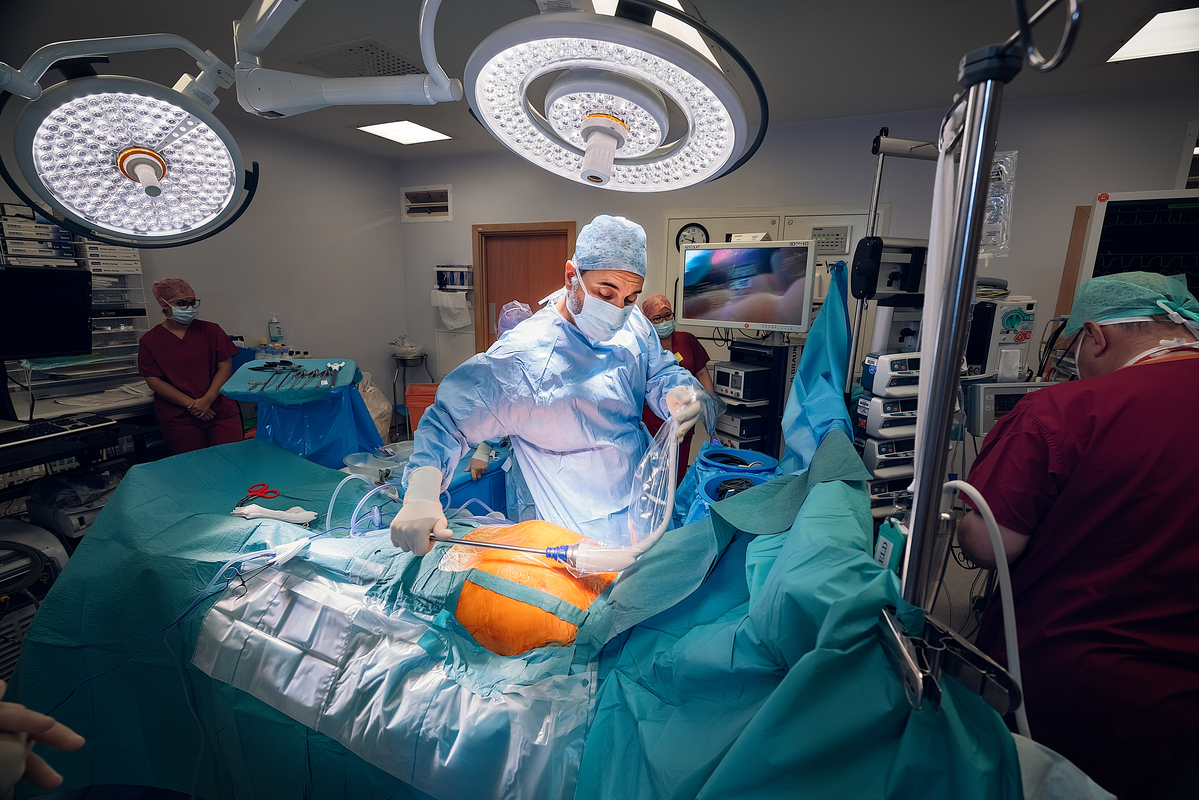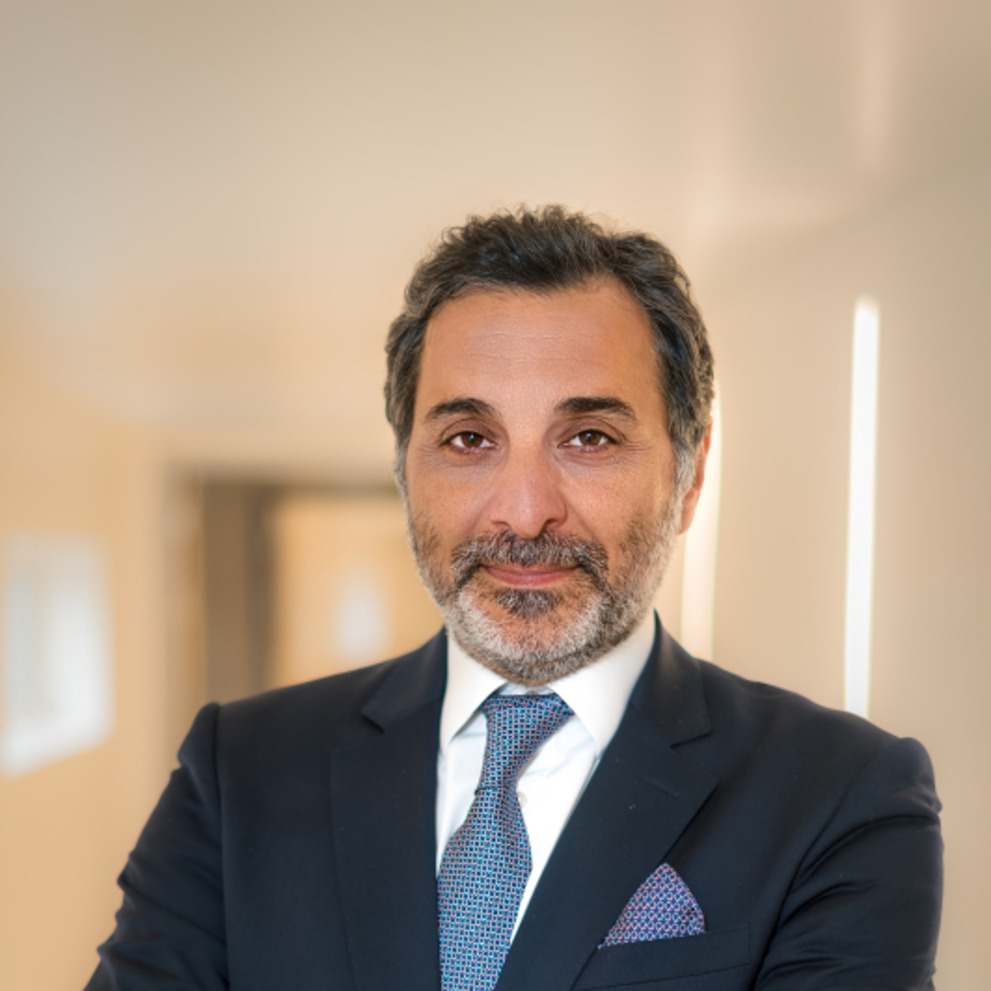Our consultant cardiac surgeons, led by Mr Toufan Bahrami, have developed a new totally endoscopic (keyhole) procedure to repair the heart’s mitral, tricuspid and aortic valves. The new treatment, first performed in the UK at Royal Brompton and Harefield hospitals, offers an alternative to invasive open-heart surgery, allowing for significantly improved patient recovery and less scarring.
Innovating valve repair surgery
Previously, sternotomy was the well-established procedure for treating mitral, tricuspid and aortic valve disease. This involves making an incision – typically 20-30cm long – over the sternum to access the heart and blood vessels for treatment, before reconnecting the sternum.
However, after making adaptations towards sternotomy with a smaller incision, and then to a minimally invasive procedure, our consultants, led by Mr Toufan Bahrami, have now evolved the treatment into a completely endoscopic procedure performed through an incision of approximately 2.5cm in around 4 hours.

The procedure relies on the use of 3D cameras to project detailed footage of the patient’s heart onto a screen, allowing the surgeon to work by focusing on the screen and not by looking at their hands or directly into the incision. We are the only hospital in the UK to perform this totally endoscopic treatment and we have a dedicated cardiac team for valve repair.
The history of minimally invasive and endoscopic surgery
Driven by the goal of improving patients’ recovery times and reducing their pain levels, Mr Bahrami and his team have led a number of innovations in the field of valve repair surgery over the years. From 2010 to 2015, the procedures they performed were minimally invasive. This involved making a small incision of around 6-7cm in the patient’s side to access the heart valve during surgery.
Following this came endoscopic assisted treatment which was used from 2015 until 2021. In these procedures, the surgical team still looked through the incision, rather than relying entirely on the camera to complete the procedure, but some parts of the operation were endoscopic.
Mr Bahrami and the team then began performing the totally endoscopic procedure in 2021, using camera footage projected onto 3D screens, combined with 3D glasses, to operate instead. They have now performed this endoscopic procedure over 1,000 times, and Mr Bahrami explains, “without minimally invasive and totally endoscopic options, we would not be able to provide these gold-standard results.”
Repair rates in sternotomies vs. endoscopic procedures
To further prove the benefits of endoscopic heart valve surgery, Mr Bahrami’s team participated in a multicentric trial over the last 5 years. The research compared the results of standard sternotomies versus minimal access procedures in mitral valve surgery.
Based on this research, in April 2023, the Journal of the American Medical Association (JAMA) published a study showing that the repair rate is the same across sternotomies and minimal access procedures, including endoscopies. Minimal access surgery is therefore just as safe as sternotomy, but with a significantly improved recovery time.
3D technology in cardiac surgery

Open heart surgery versus keyhole heart surgery
To perform the procedure, a small incision is made between the ribs to insert the endoscope with a camera at the end. Another incision is made in the groin to use the artery and vein to perform the bypass. During the endoscopy, a high-definition 3D camera is used to direct the procedure inside the heart through a small incision (2.5cm) in the chest.
Wearing 3D glasses and guided by images projected onto a 3D screen, the surgeon can then repair or replace the damaged valve using specially designed longer instruments. Not only does this technology produce better results for the patient, but it means that every medical staff member in the room is able to see the surgery in detail.
“The projected images can also be accessed remotely via the internet,” adds Mr Bahrami. “This provides a new way for us to combine our multi-disciplinary expertise for the best outcome of care, allowing our specialists to collaborate from anywhere in the world.”
Significantly improved patient recovery
After endoscopic valve repair surgery, patients are usually discharged in around 4 days and are back to their normal activities after 3 weeks. This is significantly faster than the 3-4 months of recovery required after a sternotomy, even though the two types of procedures take a similar amount of time to carry out.
Mr Bahrami explains, “the whole purpose is not to make the operation shorter than a sternotomy – it’s to provide a quicker, less painful recovery period.” This comes from eliminating the need for the 20-30cm chest incision made in sternotomies and its associated effects on the breathing mechanism. To this end, some of Mr Bahrami’s patients have even been walking 15,000 steps a day and are back to driving within their first 2 weeks of recovery.
Committing to training and education
Our pioneering technology and surgical techniques used for endoscopic mitral, tricuspid and aortic valve surgery allow us to demonstrate our commitment to learning and education by providing valuable teaching opportunities worldwide.
Mr Bahrami is working with the biomedical engineering group at St Thomas’ Hospital on an artificial intelligence and virtual reality training for endoscopic surgery. “We’re regularly recording videos of the procedure and then are integrating the videos with artificial intelligence to create a training programme,” explains Mr Bahrami. “This means that professionals can learn how to carry out the endoscopy by practicing it virtually first.”
Medical governing body, The Society of Cardiac Surgeons, recommends that a minimally invasive approach should be the first port of call for all patients. If a patient’s existing surgeon doesn’t perform the treatment, the patient must be referred to a provider who does. Our commitment to education and training within the medical profession will, in time, make endoscopic surgical options more widely available, benefiting more patients.
Mr Bahrami is currently the president of a charitable organisation, the British & Irish Society of Minimally Invasive Cardiac Surgery, using his time in this position to further promote safety and teaching in minimally invasive techniques in cardiac surgery. These advancements will improve the experience of surgery and recovery for patients on a global scale, working towards making this treatment the standard for valve repair surgery.
Mr Bahrami is currently the president of a charitable organisation, the British & Irish Society of Minimally Invasive Cardiac Surgery, using his time in this position to further promote safety and teaching in minimally invasive techniques in cardiac surgery. These advancements will improve the experience of surgery and recovery for patients on a global scale, working towards making this treatment the standard for valve repair surgery.
When to refer to us
Patients can be referred to us for repair of the aortic, mitral or tricuspid valves. Our expert team can perform endoscopic valve repair for both stenosis and regurgitation and are proud to be the only providers in the UK of this treatment endoscopically.
Get in touch
To find out more about our endoscopic heart surgery expertise, please contact us today.
Related content
-
Aortic disease
Aortic stenosis is a narrowing of the aortic valve opening, restricting blood flow to the aorta.
-
Transcatheter aortic valve implantation (TAVI)
TAVI is a minimally invasive procedure where a new aortic valve is inserted into your heart.
-
Valve repair or replacement
Heart valve surgery can repair or replace a damaged valve.

